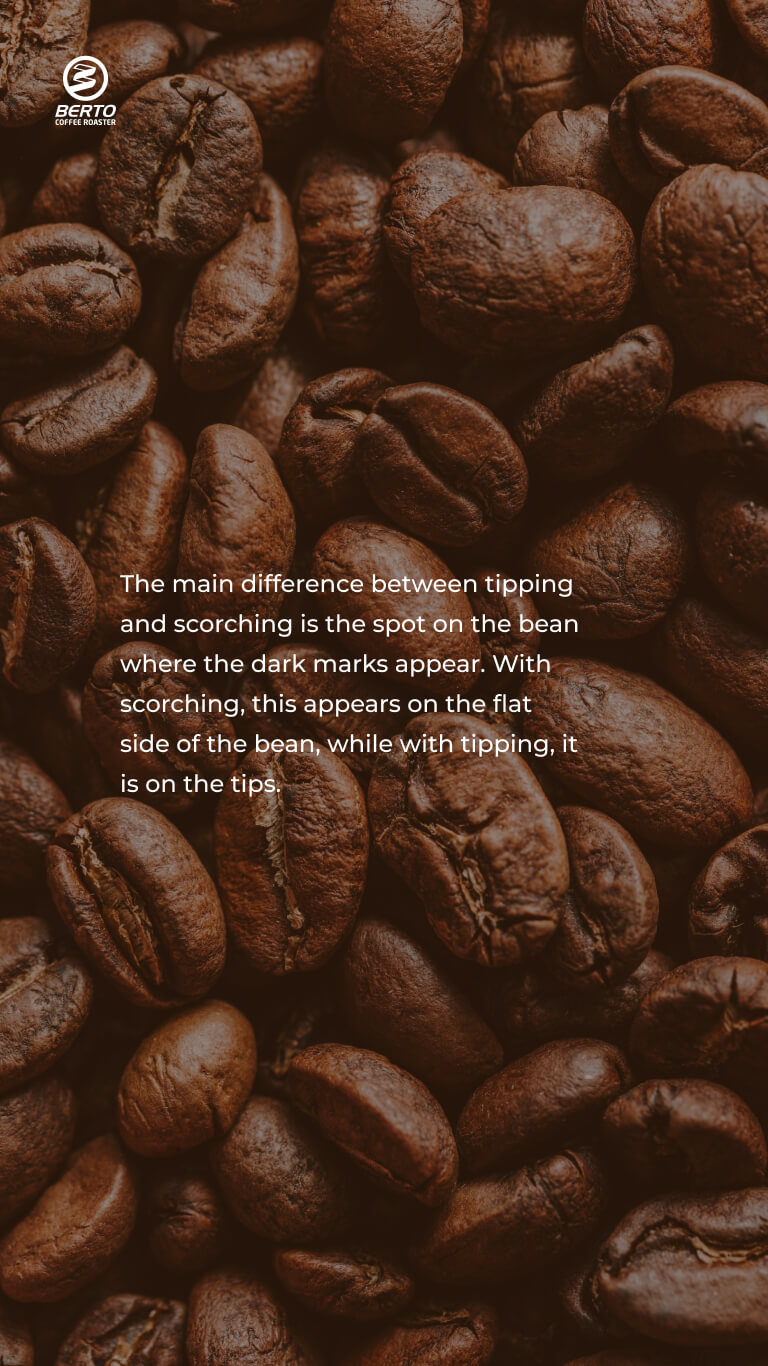Coffee Roast Defect: How to Avoid Tipping & Scorching?
Roasting coffee is a tricky process, and even the most skilled roasters can make mistakes.
Overdeveloped, underdeveloped, scorched, or baked beans can ruin entire batches and affect the overall flavor. These mistakes, known as “coffee roast defects,” occur when roasters lack crucial information during key points of the roast. Achieving consistent roasts every time requires knowledge, experience, and a lot of patience!
Two common coffee roast defects are tipping and scorching, which are easy to spot as scalds or burns on the beans’ surface. Avoiding making these mistakes can be challenging but not impossible. So how can you avoid these roasting defects?
Understanding Common Coffee Roast Defects: Tipping & Scorching
What are the Differences Between Tipping and Scorching?
Tipping is a coffee roast defect characterized by discoloration or breaking off the beans’ ends or edges. This issue usually arises from roasting the coffee too fast, faster that the bean’s ability to absorb the heat. To identify tipping, look for small, rounded, or pointed fragments on the surface of the beans. These damaged areas may appear darker in color compared to the rest of the bean, indicating the presence of tipping in the roast.
Scorching, on the other hand, is a coffee roast defect that occurs when the beans come into direct contact with high drum surface temperature or experience localized overheating. This leads to visible burns or dark spots on the surface of the beans, which can be darker or even black in color, contrasting with the normal roast color. The consequence of scorching is a bitter or charred taste in the coffee, negatively impacting its flavor. To produce a high-quality roast, avoiding scorching during roasting is essential.
Essentially, tipping happens when the heat is too high which causes too much heat transfer too quickly, leaving dark burn marks on the bean tips. Scorching happens when the conductive heat transmission is too large for the bean surface to tolerate.
The main difference between tipping and scorching is the spot on the bean where the dark marks appear. With scorching, this appears on the flat side of the bean, while with tipping, it is on the tips.
How Do I Avoid Tipping and Scorching?
You must consider several key factors to avoid tipping and scorching during the coffee roasting process.
Firstly, ensure your roaster is set up correctly, providing even heat distribution and precise temperature control. Preheating the roaster before adding the beans will create a stable environment for a more controlled roast.
Batch size is essential – avoid overfilling the roaster drum or pan. Opt for smaller batch sizes that allow the beans to move freely, ensuring a more even roast.
Develop a well-planned roasting profile to prevent tipping and scorching. Pay attention to the time and temperature settings throughout the process. To prevent tipping, slow down the roast. If necessary, do a heat soak instead of applying high heat right from the start.
Maintain proper airflow during the roast. Good ventilation in the roaster is essential to avoid hot spots and ensure the beans roast evenly. Adjust the airflow settings as needed to optimize the roasting conditions.
Bean movement is another critical aspect. Choose a roasting method that allows for continuous bean movement. In a drum roaster, consistently ensure the beans are agitated to prevent scorching and tipping.
Regular monitoring and observation are vital. Keep a close eye on the beans’ appearance and color throughout the roasting process. Look for any signs of scorching or tipping, and adjust the roast accordingly to avoid further issues.

Identifying Coffee Roast Defects Through Flavour
Roast defects significantly impact the flavor, ranging from slightly obscuring the coffee’s flavor notes to completely overpowering the taste. Identifying and addressing these defects is important to let the desired flavors of the coffee shine through and ensure consistent roasts.
Consistency is key in coffee roasting. Roast defects can disrupt coffee’s unique and consistent flavors, making it crucial to identify them during the quality control phase after roasting.
Tipping and scorching can result in astringent, burnt, and smoky flavors in the coffee. However, these defects can sometimes be a subtle backdrop in an otherwise acceptable or flavorsome cup.
Top tip: Keep learning from your roasting experiences! Keep detailed records of your roasting parameters and observations. Analyze each roast to understand how to fine-tune your technique and avoid future defects.
Follow Berto on Instagram for more coffee-roasting tips and tricks or learn more about our machines that can ensure you a consistent roast every time!


